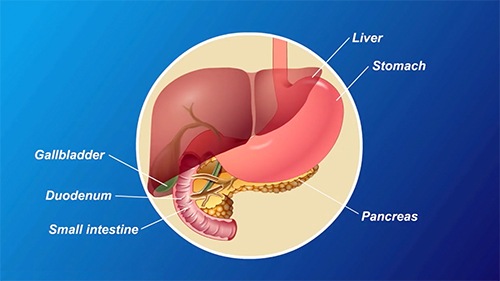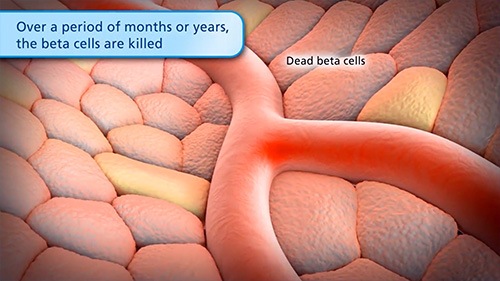Prevention and Treatment of Diabetes with Diet and Exercise
Maintaining a healthy diet and regular exercise routine are key pillars in preventing the onset of diabetes.
Maintaining a healthy diet and regular exercise routine are key pillars in preventing the onset of diabetes.
A balanced diet rich in fiber, whole grains, lean proteins, and vegetables helps regulate blood sugar levels and prevents spikes that can lead to insulin resistance.
Regular physical activity, such as aerobic exercises and strength training can improve insulin sensitivity, control weight, and lower blood sugar levels. Exercise also helps manage stress levels, another contributing factor to diabetes risk.
We hear about Diabetes all the time but what are the different forms of Diabetes and why do we need to be aware of diabetes?
To understand Diabetes we first need to understand the pancreas and its function pertaining to blood sugar.
The pancreas is about 6 inches long and sits across the back of our abdomen, behind the stomach. The head of the pancreas is on the right side of our abdomen and is connected to the duodenum (the first section of the small intestine) through a small tube called the pancreatic duct. The narrow end of the pancreas, called the tail, extends to the left side of our bodies.

The pancreas is about 6 inches long and sits across the back of our abdomen, behind the stomach. When the pancreas malfunctions, it shows up as diabetes.
This little organ has a massive impact on the quality and length of our lives based on the hormone insulin it produces. Insulin is the master regulator in turning glucose, a type of sugar, from the food we eat into usable energy.
When we have a malfunction of our pancreas it shows up in many areas of our lives but today we will only focus on three; Type 1, type 2 and pre-diabetes. So let’s look at these three real quick.
Type 1 diabetes is a condition in which our immune system destroys insulin making beta cells in our pancreas. This form of diabetes is usually diagnosed in children and young adults and is known as juvenile diabetes.

In type 1 diabetes, the insulin making beta cells are killed by the immune system over a period of months or years.
Type 2 diabetes we are still making insulin, but our cells don’t use it as well as they should and here is where the problem begins. In the beginning stage, our pancreas makes more insulin trying to deliver glucose into our cells.

In type 2 diabetes the body is not able to make enough insulin which causes blood sugar to be locked out of the cells.
But eventually our little pancreas gets tired and can’t keep up, so the glucose in our blood stream builds up to dangerous levels.
People with type 2 diabetes are said to have insulin resistance. Those of us who are mostly affected by type 2 diabetes are middle-aged or older and due to their age this is labeled adult-onset diabetes. However, type 2 diabetes also affects kids and teens, mainly because of… I hate to say it… childhood obesity caused by poor lifestyles.
Type 2 diabetes is the most common type affecting an estimated 29 million of us in the U.S. not to mention that roughly 8 million of us have it and don’t even know it since our symptoms are so mild.
So now let’s take a look at prediabetes since this is where the most good can be held… prevention is the key here.
Prediabetes is an ongoing condition when our blood sugars, glucose, is elevated but not elevated enough to be diagnosed as diabetes yet. Keep in mind those of us with prediabetes, that goes uncontrolled will turn into type 2 diabetes.
Currently, about 88 million of us over age 20 in the U.S. have pre-diabetes, but 84% of us don’t even know we have this pre-life altering disease…
Can I get a… Holy Cow!!
For those of us who are fighting diabetes and those who are prediabetic understand that diabetes is a lifelong disease that demands daily attention, monitoring and lifestyle modification because without proper management, diabetes can have debilitating with irreversible consequences.
You might find yourself asking; If I am prediabetic or have diabetes… how can I treat it organically? This is such a loaded question due to the fact that it’s all individual based on a moment to moment moving disease. Therefore the answer to this question isn’t easy or easy to come by… no matter what popular media tells us.
Sorry!

Brian working with a client virtually via FaceTime.
Listen, I could get you all excited about how easy it is to make some small changes to your diet and do a little cardio and push some weights around. Or better yet I could you excited and tell you to simply get involved in generic events to control diabetes… but I would be just simply lying.
So let’s see where exercise, lifestyle modification and TheissCare fits into those with prediabetes or diabetes. Keep in mind that the founder of TheissCare has worked with thousands of clients globally for the past 35 years and counting with astonishing and life saving results time and time again with clients dealing with diabetes.
We contribute our success here with those dealing with any form of diabetes to detailed monitoring and care with their health care providers.
We also contribute our success to the nature and structure of our exclusive physical facility and our virtual programs. Your success with TheissCare comes from our caring for you.
I have dedicated my life to saving yours and with that said I can assure you this. If you invest in yourself with TheissCare and do the work we unfold for you and stay the course you too will have the same opportunity for life changing and life saving outcomes. I promise you this!!!
Blood Sugar Control: A balanced diet low in refined sugars and carbohydrates, combined with regular exercise, helps regulate blood sugar levels, preventing spikes and reducing the need for insulin or other medications.
Weight Management: Both diet and exercise play crucial roles in weight management. Maintaining a healthy weight through balanced nutrition and physical activity can help prevent obesity, a significant risk factor for Type 2 diabetes.
Improved Insulin Sensitivity: Regular exercise increases insulin sensitivity, allowing cells to more effectively utilize glucose for energy. This reduces the body’s reliance on insulin and helps prevent insulin resistance, a hallmark of Type 2 diabetes.
Enhanced Cardiovascular Health: Diet and exercise contribute to improved cardiovascular health by lowering cholesterol levels, reducing blood pressure, and decreasing the risk of heart disease, which is commonly associated with diabetes.
Prevention of Complications: Managing diabetes through diet and exercise can help prevent or delay complications such as nerve damage, kidney disease, vision problems, and cardiovascular complications.
Stress Reduction: Engaging in physical activity and consuming a balanced diet can help reduce stress levels, which can contribute to better blood sugar control and overall well-being in individuals with diabetes.
Increased Energy Levels: Regular exercise and a nutritious diet provide sustained energy levels throughout the day, reducing fatigue and enhancing overall quality of life for individuals with diabetes.
Maintenance of Muscle Mass: Strength training exercises help maintain muscle mass and improve muscle function, which is important for glucose metabolism and overall metabolic health in individuals with diabetes.
Helping you is simple… contact us for a complimentary evaluation at 805-813-3280. Believe me, If you are ready for the new you it will be one of the most significant calls of your life.
God Bless!
Read the Science